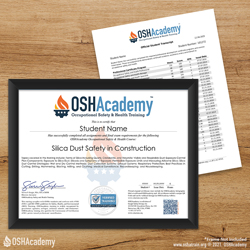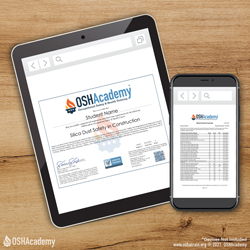Introduction
Crystalline silica commonly occurs in nature as the mineral quartz. It is found in granite, sandstone, quartzite, various other rocks, and sand. Workers who inhale very small crystalline silica particles are at risk for silicosis - an incurable, progressively disabling and sometimes fatal lung disease.
About 2.3 million workers are exposed to respirable crystalline silica in their workplaces. About two million construction workers are exposed to respirable crystalline silica in more than 600,000 workplaces. OSHA estimates more than 840,000 of these workers are exposed to silica levels that exceed the permissible exposure limit (PEL).
OSHA's 29 CFR 1926.1153, Respirable crystalline silica requires employers to limit worker exposures to respirable crystalline silica and to take other steps to protect workers.
In this course, we'll discuss these new provisions with special emphasis on effective control measures to eliminate or reduce exposure to safe levels.
Course Objectives
| ID | Objective |
|---|---|
| TO 1.0 | Achieve a minimum score of 70% on the final course assessment. |
| LO 1.1.1 | Describe the basic characteristics of respirable silica dust. |
| LO 1.1.2 | Describe the components of an Exposure Control Plan (ECP) for silica dust. |
| LO 1.2.1 | Describe exposure routes, symptoms, and effects of exposure to silica dust. |
| LO 1.3.1 | Describe silica control strategies, including engineering controls, wet/dry methods, isolation, and ventilation. |
| LO 1.4.1 | Identify effective engineering, administrative, and PPE control measures to mitigate exposure to silica dust. |
| LO 1.5.1 | Describe alternative exposure control concepts and methods including exposure assessment. |
| LO 1.6.1 | Describe OSHA requirements for respiratory protection for workers exposed to silica dust. |
Key: Terminal Objective (TO), Learning Objective (LO)



